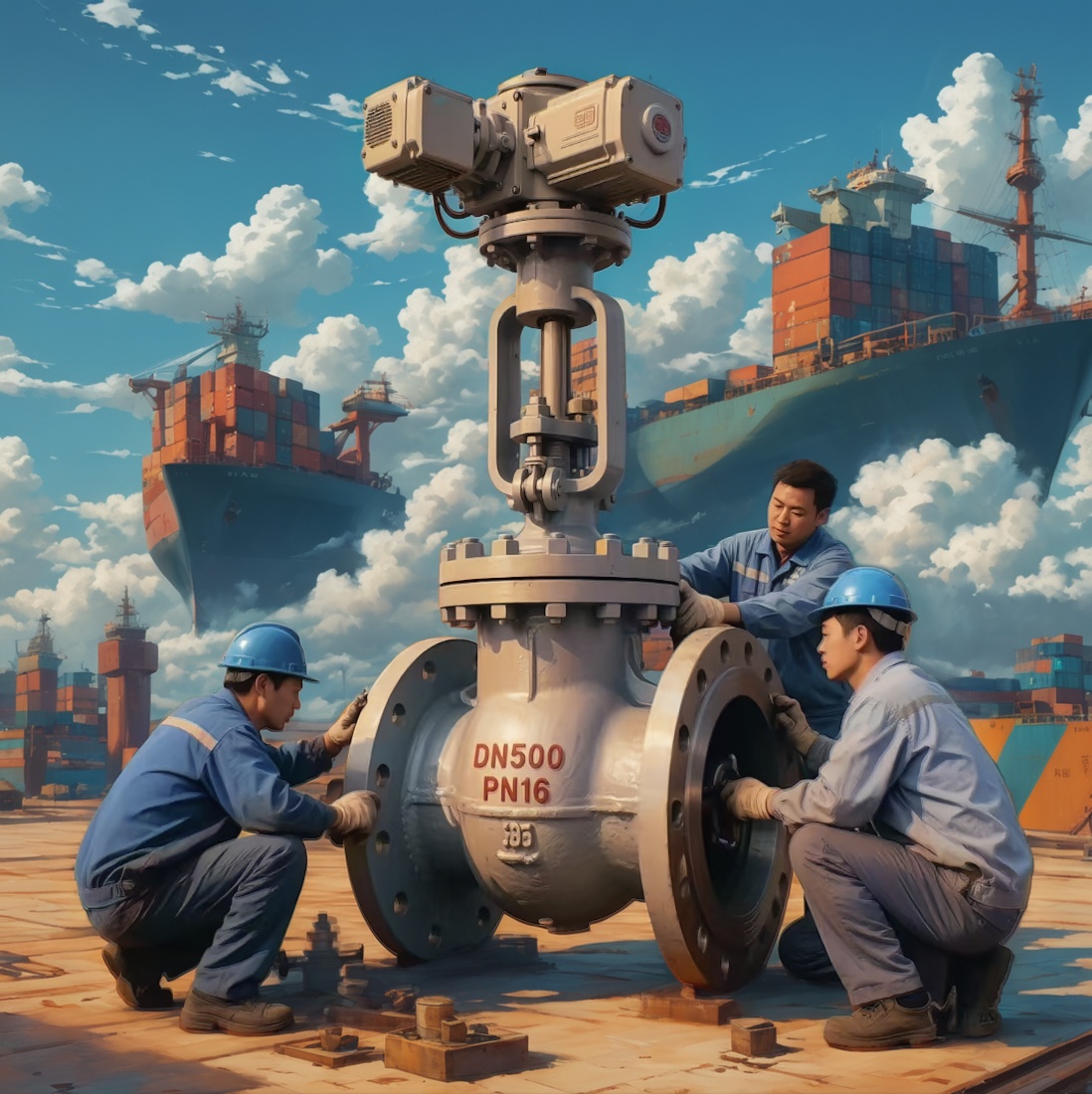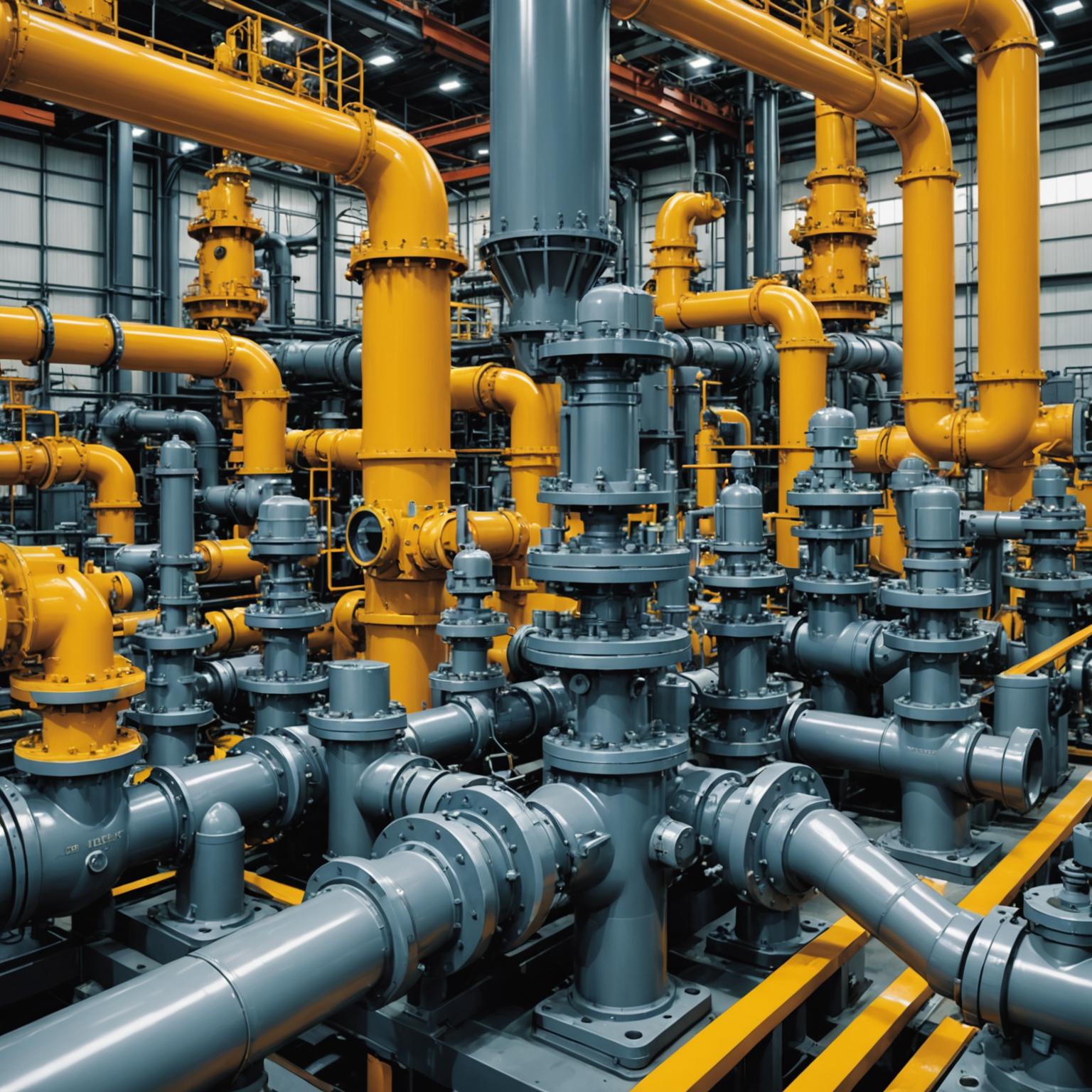The Unseen Titans of Industry
In the intricate dance of industrial processes, where liquids, gases, and steam move through miles of complex pipelines, control is everything. The ability to precisely manage this movement is orchestrated by an essential, yet often overlooked, hero: the Regulating Valve. This component is the very heart of fluid management, ensuring that every drop and every molecule flows exactly as intended. From massive water treatment plants to sprawling petrochemical facilities, the principle of effective valve regulation is what separates a smooth, efficient operation from a chaotic and potentially hazardous one. These devices are the silent workhorses that enable the precision, safety, and reliability we depend on in the modern world.

A Masterpiece of Industrial Engineering
Imagine a component so robust it can command the flow within enormous pipelines, a true titan of industrial infrastructure. A prime example is the DN500 PN16 gate valve, a marvel of modern engineering designed for the most demanding applications. With a nominal diameter of 500mm and the ability to handle pressures up to 16 bar, this valve is built for large-scale fluid systems. Its construction from premium alloys provides formidable resistance against corrosion and wear, making it a stalwart choice for harsh environments, including marine applications. The heavy-duty flanged ends are meticulously designed to create an impeccable seal, drastically reducing the risk of leaks and promoting unparalleled operational safety. This sheer scale and power make it a cornerstone in industries where managing substantial flow rates is a daily necessity, embodying the strength required from sophisticated flow control valves.
Diverse Designs for Precision Control
While a powerful gate valve excels at providing on-off service for massive pipelines, the world of industrial control requires a diverse array of solutions. The broader family of flow control valves includes several specialized designs, each tailored for different operational needs. Globe valves, for instance, are the masters of throttling; their internal design allows for very fine adjustments to the flow rate, making them ideal for applications requiring meticulous control. Ball valves, with their simple quarter-turn operation, offer rapid shut-off capabilities and excellent reliability. Butterfly valves provide a lightweight and cost-effective solution for regulating flow in large-diameter pipes. Understanding the specific strengths of each type of Regulating Valve is crucial for engineers when designing a system that requires nuanced and dependable performance.
The Automation Revolution in Valve Regulation
Atop a modern industrial valve, you will often find an advanced actuator, a signal of the technological leap in fluid control. The integration of electric, pneumatic, or hydraulic actuators has revolutionized the field of valve regulation. These automated systems offer a level of precision and responsiveness that manual operation simply cannot match. An electric actuator, for example, allows for seamless, remote control, empowering operators to make micro-adjustments from a central control room. This automation not only accelerates efficiency by reducing the need for manual intervention but also significantly enhances safety. In critical situations, the ability to open or close a valve in seconds can be the difference between a minor issue and a major incident. This sophisticated control is the pinnacle of modern valve regulation, ensuring systems operate with maximum precision and security.
Built for Durability and Reliability
The performance of a Regulating Valve is fundamentally tied to its physical construction. The choice of materials is a critical decision, dictated by the nature of the fluid being handled, the operating temperature, and the pressure levels. Premium alloys are often employed to combat the corrosive effects of chemicals or saltwater, ensuring a long and reliable service life. The mechanical design is equally important. The heavy-duty flanged ends seen on large industrial valves are not just for show; they provide a secure and rigid connection to the pipeline, capable of withstanding immense forces and preventing leaks that could be both costly and dangerous. This focus on robust construction ensures that these essential components can deliver nonstop performance, serving as the formidable backbone of industrial pipelines for years to come.
Indispensable Across Global Sectors
From the immense cargo ships in a bustling port to the core of a power generation facility, the applications for advanced flow control valves are vast and varied. In the marine sector, they manage ballast water, fuel lines, and cargo systems, operating reliably in the face of constant exposure to corrosive saltwater. Within petrochemical plants, they handle volatile and hazardous substances with precision, a critical task for maintaining safety and process integrity. Water treatment facilities rely on them to manage the flow through various stages of purification, ensuring the delivery of clean water to communities. In power generation, these valves control the flow of superheated steam to turbines, a function where failure is not an option. In each of these sectors, dependable valve regulation is the unseen force that guarantees steady operations, driving the logistics and energy networks that underpin the global economy.

